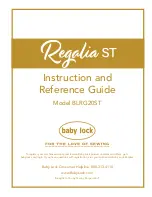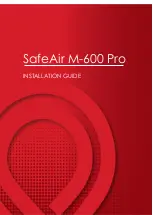
2 / 6
P/N 466-
2934 • REV A • ISS 26MAY17
•
Avoid locations that expose the sensors to possible false
alarm sources such as:
- Glass airlocks and vestibule areas
- Kitchens
- Corner mountings
- Residential car garages
- Small utility rooms
- Stairwells
- Bathrooms
- Small acoustically live rooms
Coverage range
The sensors are omnidirectional, providing 360° coverage.
Coverage is measured from a sensor to the point on the glass
farthest from the sensor. The sensors can be mounted as
close as 3.3 ft. (1 m) from the glass. The maximum range
depends on the type of glass being protected:
Armor-coated glass
Mount the sensors no more than 12 ft. (3.65 m) from the glass.
Plate, tempered, laminated, and wired glass
When the sensors are mounted on the ceiling or the opposite
or adjoining wall, (Figure 2 below) maximum range is 25 ft.
(7.5 m).
Figure 2: Maximum coverage range
Testing
Test the sensor upon installation and if the window glass-type
is changed.
The sensors are designed to detect the breaking of framed
glass mounted in an outside wall. Testing the sensors with
unframed glass, broken bottles, etc., may not trip the sensors.
The sensors typically do not trip to glass breaking in the middle
of the room. To verify sensor range and operation, you need to
use the UTC Fire & Security 5709C hand-held tester.
Test mode
To put the sensors in test mode, do the following:
1. Connect a 9-volt battery to the sensor for pretesting.
2. Temporarily mount sensor in the desired location.
3. Use the 5709C hand-held tester to put the sensor into test
mode. Set the tester to tempered glass and hold the tester
on top of the sensor (Figure 3 below). Activate the tester,
this will trip the sensor into test mode for one minute. In
test mode, the LED will blink continuously. To extend test
time, activate the tester at least once a minute.
When the system is armed and the sensor trips to an alarm
condition, the LED will light solid for four seconds and then
revert back to a one minute test mode. At the end of one
minute, the LED will extinguish if it is in
set up LED
mode, or
the LED will light if it is in
latching LED
mode.
Figure 3: Activating test mode
Sensor test
Before you can test the sensors, they must be in test mode
(blinking). To test the sensors, do the following:
1. Choose the laminated setting on the tester.
2. Hold the tester near the surface of the glass to be
protected and aim the speaker at the sensor. Be sure the
tester is at the point on the glass farthest from the sensor.
If closed drapes or curtains are present, hold the tester
behind them (Figure 4 below).
Figure 4: Testing behind curtains
3. Press the test button on the tester. The LED on the sensor
should stay on for four seconds to indicate the glass is
within detection range of the sensor. If the LED does not
stay on for four seconds, move the sensor and retest.
For latching LED, provide a power reset by removing power
and resetting the LED.
25 ft. (7.5 m)
25
ft. (
7.5
m)
Hold tester so that the speaker is
within 1 inch of sensor microphone.
In test mode the sensor LED will light
solid for about 4 seconds,
then blink for about a minute.
1 inch
























